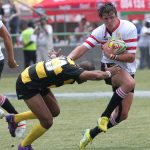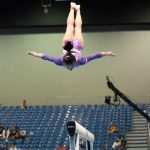The issue of concussion in sports has gained significant attention over the last decade. This pressing concern has not only garnered the interest of medical professionals, but sports organisations, athletes, and the public at large. It is a topic that calls for attention due to its potential life-altering effects on players’ health. Concussions, a type of traumatic brain injury, pose a serious risk to athletes of all ages and skill levels in a wide range of sports. In the United Kingdom, sports clubs are grappling with how best to manage and treat these injuries. This article delves into the effective strategies that UK sports clubs can adopt to manage and treat concussions, thereby enhancing the safety of their players.
Understanding Concussions in Sports
Before we delve into the meat of how to manage and treat concussions, it’s crucial to understand what a concussion is and how it can occur in sports. Concussions are caused by a blow to the head or a whiplash-type injury that causes the brain to shake inside the skull. This can lead to immediate and temporary impairment in neurological function notably affecting memory, orientation and balance.
Cela peut vous intéresser : How can UK sports teams use gamification to improve training engagement?
In the context of sports, these injuries are prevalent and potentially inevitable. Whether it’s a game of rugby, football, or cricket, the risk of a player suffering a concussion is always present. According to research from Google Scholar, PubMed, and Crossref, concussions are one of the most common injuries in sports. Concussions can not only affect a player’s performance but also their long-term health if not properly treated. Therefore, accurate diagnosis, management, and treatment are critical to ensure the welfare of athletes.
Concussion Assessment and Diagnosis
The first step in effectively managing and treating concussions in sports is accurate assessment and diagnosis. During a match, if a player suffers from a blow to the head, immediate medical attention is necessary. The trained medical staff should be able to recognise the signs and symptoms of a potential concussion. These can range from loss of consciousness, disorientation, and dizziness to headache and difficulty in remembering events before or after a hit or fall.
En parallèle : What are the best practices for UK sports teams to manage player burnout?
In addition to the immediate assessment, sports clubs should also have a protocol in place for a comprehensive follow-up evaluation. This includes clinical assessments, cognitive testing, and potentially brain imaging to help diagnose a concussion accurately. Moreover, sports clubs should consider investing in innovative technologies that can assist with on-field assessment of potential concussions. It is also vital for sports clubs to maintain a detailed medical record for every player, documenting any head injuries and their management.
Concussion Management and Return to Play
Once a concussion has been diagnosed, appropriate management is paramount. The cornerstone of concussion management is physical and cognitive rest until the acute symptoms resolve. The players should refrain from any physical activity that could potentially exacerbate symptoms or lead to another concussion.
It’s essential that sports clubs have a well-defined ‘return to play’ protocol. This approach involves a stepwise progression of activity. The players should only progress to the next level of intensity if they are symptom-free at the current level. The final decision about ‘return to play’ lies in the hands of the medical professionals, who will consider not only the player’s symptoms but also the potential risk of harm.
Educating Players and Staff about Concussions
Education is a key component in the effective management and treatment of concussions. Players, coaches, and other staff members should be educated about the risks of concussions, their signs and symptoms, and the importance of reporting any suspected concussion. Moreover, players should be made aware of the potential long-term consequences of repeated concussions and the importance of full recovery before returning to play.
Sports clubs could consider hosting training sessions or workshops headed by medical professionals to educate their members about concussions. Online resources, such as those available on Google Scholar, PubMed, or Crossref, can also be utilised to enhance the understanding of concussions among the club members.
Collaborating with Healthcare Professionals
To effectively manage and treat concussions, sports clubs should consider fostering a close collaboration with healthcare professionals. This includes not only doctors and nurses but also physiotherapists and psychologists. These professionals can provide the necessary medical care for the players, ensure their safe return to play, and support their mental health throughout the recovery process. Collaborating with healthcare professionals can ensure that sports clubs are equipped with the latest knowledge and strategies for concussion management and treatment.
In conclusion, concussions in sports are a significant health concern that must be addressed proactively. Through effective assessment and diagnosis, appropriate management, comprehensive education, and collaboration with healthcare professionals, UK sports clubs can ensure the safety and wellbeing of their players.
Utilising Innovative Technologies for Concussion Diagnosis
With advancements in technology, diagnosing a concussion can be done more effectively and accurately. The use of innovative technologies can assist medical professionals in evaluating the potential effects of a head injury. Some of these technologies include balance testing systems, neuropsychological testing, and advanced brain imaging techniques.
For example, balance testing systems use force platforms to assess a player’s postural stability after a blow to the head. Neuropsychological testing, on the other hand, uses computerised exams to detect changes in a person’s cognitive function. These can pick up subtle changes in attention, memory, and speed of mental processing, which are common cognitive symptoms of a concussion.
Advanced brain imaging techniques such as functional MRI (fMRI) and diffusion tensor imaging (DTI) can detect minute changes in brain function and structure. These techniques have been found to be particularly helpful in diagnosing concussions, especially in cases where standard MRI or CT scans may have been normal.
Sports clubs are encouraged to invest in such technologies, and make use of the benefits they offer. This would involve consulting with healthcare professionals, staying updated with the latest research available on Google Scholar, PubMed, and Crossref, and integrating these technologies into their concussion management protocol.
The Role of Consensus Statements and Systematic Reviews in Concussion Management
Navigating the wealth of information available on concussion management can be challenging for sports clubs. This is where consensus statements and systematic reviews come into play. A consensus statement is a document that summarises the agreement among a panel of experts, based on a systematic review of the evidence.
Organisations such as the Concussion in Sport Group (CISG) publish consensus statements that provide guidelines for the diagnosis, management, and return to play protocols for sports-related concussions. These documents are available free of charge and are a valuable resource for sports clubs.
Systematic reviews, on the other hand, provide a comprehensive summary of all the available evidence on a specific topic. They follow a rigorous methodology to minimise bias and ensure the reliability of their findings. Sports clubs can find articles that are systematic reviews on concussion management on databases like Google Scholar, PubMed, or Crossref.
Using consensus statements and systematic reviews, sports clubs can ensure they are following the best evidence-based practices in managing concussions. This is an essential step in safeguarding the health and wellbeing of their players.
The issue of concussions in sports is one that cannot be taken lightly. As we have seen, the impacts of a concussion can be far-reaching, affecting not only a player’s performance on the field but also their long-term health. For sports clubs in the UK, it is their responsibility to ensure the safety and wellbeing of their players.
This involves understanding what a concussion is, being able to effectively diagnose and manage it, and diligently following ‘return to play’ protocols. It also means educating players and staff about the risks associated with concussions and how to recognise the associated symptoms.
Investing in innovative technologies and staying updated with the latest research and consensus statements can further enhance a club’s ability to manage concussions effectively. Taking these steps not only protects athletes but also contributes to the integrity and safety of sports in the United Kingdom.











